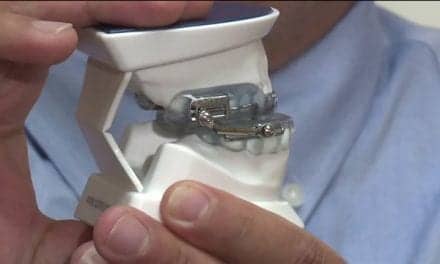A sleep physician comes to appreciate that men and women often differ in their perceptions of CPAP therapy.
“Doc, there’s no way I’m going to wear that thing.”
“You’re kidding, right? Isn’t CPAP for old, fat men?”
And so begins another Monday in sleep clinic. I get it. CPAP isn’t sexy—but neither is untreated sleep apnea. OSA prevalence continues to increase with an estimated prevalence of one billion people worldwide.1 We are learning more about OSA and other comorbid disease. We are beginning to understand that OSA is a chronic medical disorder that requires chronic treatment.
I agree: CPAP isn’t perfect. But we still need to treat obstructive sleep apnea when it meets criteria for treatment. As women, we (in general) seem to fight the idea of having OSA more than our husbands do. We have a lot of negative associations with the idea of having sleep apnea and with CPAP therapy in general. We often take it to mean that we are “too fat” or “too old.” The reality is that age and body mass index (BMI) are factors for some patients but not for all. Young women with low BMIs can have OSA too. It is just the way our anatomy is.
More data is showing us that as women, OSA impacts us in different ways. According to a recent Harvard study by Gabriela Roca, MD, et al, OSA is an independent risk factor for heart disease in women, but not men. It evaluated 1,625 people who were free of heart disease at baseline and followed them for an average of 14 years. They found sex-specific differences with respect to cardiovascular disease and sleep apnea. In women, sleep apnea was associated with a higher troponin level, signifying early heart injury. They also found an increased risk of heart failure, coronary artery disease, cardiac enlargement, and death in women with OSA.2 This was a strong argument in favor of looking for OSA in women, who may present with more atypical symptoms and thus remain under-diagnosed.
New data is also demonstrating that sleep is important for cognition. I had the opportunity to hear Charles Czeisler, PhD, MD, speak a few years ago at a Sleep Medicine Trends (by the American Academy of Sleep Medicine) conference. He described an animal study that looked at how the brain changed during sleep.3 He asked us to imagine that our brain is like New York City—lots of tall buildings with alleys in between. All day long, people are tossing debris out of the windows and it is being cleared away by trucks in the alleys. During sleep, the buildings shrink and the alleys become wide. All of that debris is swept away. When we don’t have adequate sleep, the debris builds up. When they analyze that debris, it is beta amyloid, a substance implicated in Alzheimer’s dementia. Sleep may play a pivotal role in cognition by clearing away this beta amyloid build-up.
The beauty industry too recognizes the importance of good sleep. Estée Lauder funded a study looking at skin quality and sleep. It found that those who slept well appeared to be more youthful than those who did not sleep well. Poor sleepers assessed their skin and facial appearance more negatively than good sleepers. They also had slower recovery from sun exposure. The study utilized objective measures to score skin aging. Again, those who were poor sleepers showed increased signs of intrinsic skin aging such as fine lines, reduced elasticity, uneven pigmentation, and slackening of the skin.4
One of the most rewarding aspects of being a woman is the ability to bear children. OSA influences even this sacred time of our lives. One recent study analyzed medical records of over 1.5 million pregnant women in the US National Perinatal Information Center database. It found that the risk of intensive care unit admission was 174% higher in pregnant women with OSA compared to pregnant women without OSA. Moms with OSA also stayed in the hospital longer and had a significantly higher risk of serious complications such as cardiomyopathy (259%), hysterectomy (126%), congestive heart failure (263%), and pulmonary edema (406%).5
The authors reasoned that since pregnancy is a window into future cardiovascular and metabolic health, it is prudent to seek an OSA diagnosis during pregnancy to potentially impact future health.
Can we change our habits to effect change on our anatomy? Yes, weight loss typically helps improve OSA. Sleeping better will help us to lose weight. Is it reasonable to treat our sleep apnea while we try to lose weight? Absolutely.
A study in 2017 showed that PAP adherence in women is impacted by our relationships: the more supportive our spouse, the better our adherence.6 If our spouse is not supportive, we tend to abandon PAP therapy.
Treating obstructive sleep apnea does not always mean wearing a CPAP device. There are many ways of treating OSA, including dental appliances, weight loss, avoiding sedatives and alcohol, nasal expiratory positive airway pressure therapy, hypoglossal nerve stimulation, and even surgery. The bottom line, though, is that we need to treat it somehow.
We also need to embrace the idea of treating sleep disorders just as we would treat any other disorder— diabetes, heart disease, or hypertension. Instead of taking a pill, we need to do something to effectively open the airway at night. If CPAP isn’t the right fit for your patient, please find something that is. This is too important to ignore simply because it seems unattractive or cumbersome.
Let’s continue to partner with our patients to identify OSA in women and treat it with a modality that is both clinically effective and accepted by the patient.
Seema Khosla, MD, FCCP, FAASM, is medical director at the Center for Sleep LLC and the North Dakota Center for Sleep.
Refererences
1. Benjafield A, Valentine K, Ayas N, et al. Global Prevalence of Obstructive Sleep Apnea in Adults: Estimation Using Currently Available Data. Am J Resp Crit Care Med. 2018;197:A3962.
2. Roca GQ, Redline S, Claggett B, et al. Sex-Specific Association of Sleep Apnea Severity With Subclinical Myocardial Injury, Ventricular Hypertrophy, and Heart Failure Risk in a Community-Dwelling Cohort: The Atherosclerosis Risk in Communities-Sleep Heart Health Study. Circulation. 2015 Oct 6;132(14):1329-37.
3. Xie L, Kang H, Xu Q, et al. Sleep drives metabolite clearance from the adult brain. Science. 2013 Oct 18;342(6156):373-7.
4. OyetakinWhite P, Koo B, Matsui MS, et al. Effects of Sleep Quality on Skin Aging and Function. 2013. International Investigative Dermatology Meeting 2013 poster.
5. Bourjeily G, Danilack V, Caldwell D, et al. Obstructive Sleep Apnea in Pregnancy Is Associated with Adverse Maternal Outcomes: A National Cohort. Am J Resp Crit Care Med. 2017;195:A2925.
6. Baron KG, Gunn HE, Wolfe LF, et al. Relationships and CPAP adherence among women with obstructive sleep apnea. Sleep Science and Practice. 24 May 2017.





